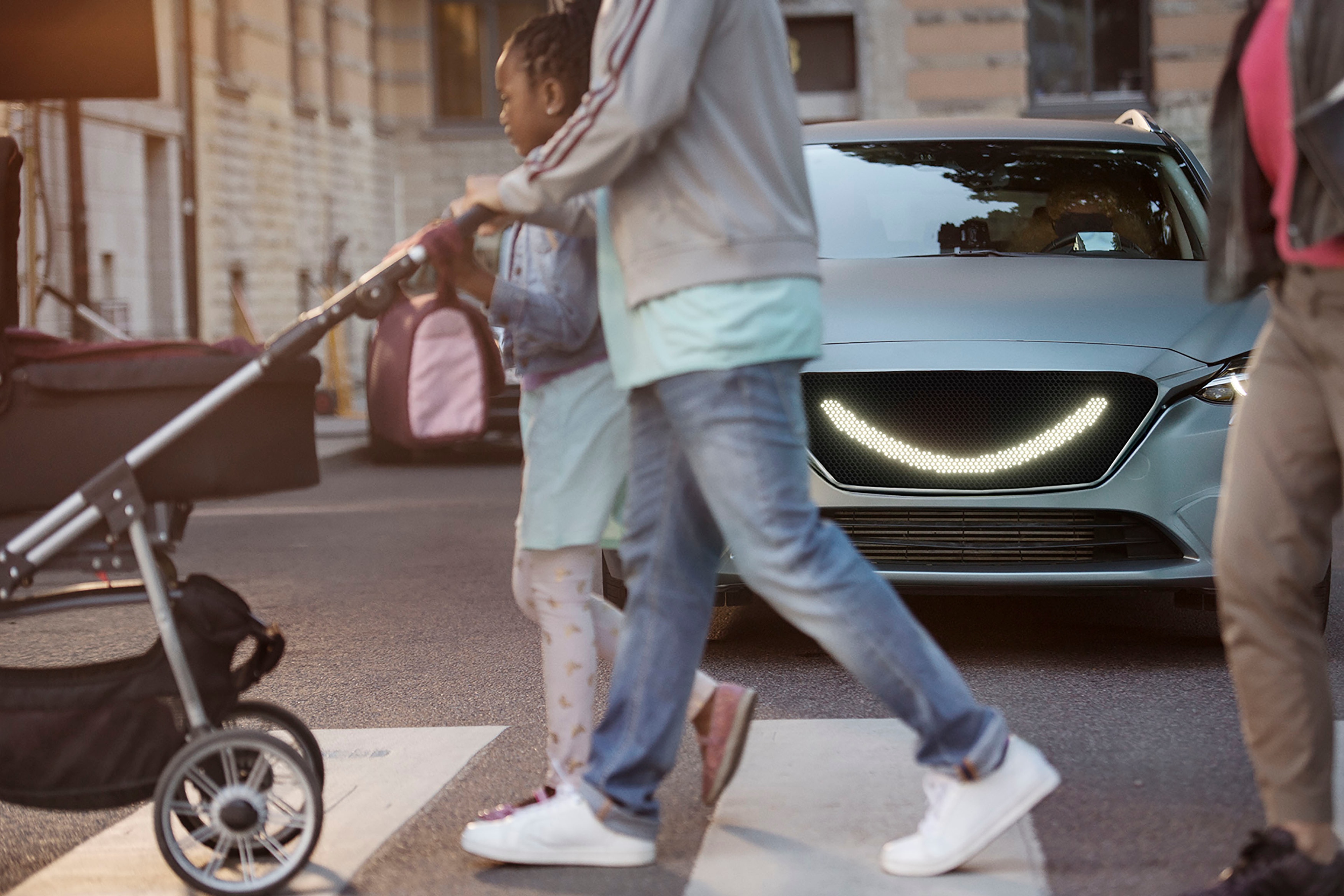ArticleMobility
The Smiling Car
Eight out of ten people seek eye contact with the driver before they cross the street. This is no longer possible with self-driving cars. In order to create trust in the new technology, we have developed The Smiling Car concept, an example of product development based on human behaviour.

Self-driving cars can bring very positive changes, for the environment, safety and quality of life. But in order for self-driving cars to be accepted they need to be able to communicate in a way that creates trust – not least with vulnerable road users in cities.
A solution based on people’s habits
This is why Semcon has developed The Smiling Car, a concept where self-driving cars interact by smiling – a message that is readily understood by everyone.

When the self-driving car’s sensors detect a pedestrian, a signal is sent to a display at the front and a smile lights up that confirms that the car will stop for the pedestrian.
The strength behind The Smiling Car is that we allow people to communicate in the way they are used to, instead of taking an unnecessary detour via technology.
– Anders Sundin, Head of User Experience, Semcon
Eight out of ten people seek eye contact
A safe traffic environment is dependent on interactions between people. Today, eight out of ten people seek eye contact with the driver before they cross a busy road (Semcon/Inizio). But what happens when there is no longer a driver behind the wheel? We decided to find out how people react to self-driving cars.

Cooperation for a global standard
The Smiling Car is the first step in a long-term process in which Semcon, together with research institute Viktoria Swedish ICT and partners in the automotive industry, wants to create a global standard on how self-driving cars communicate with their surroundings. This is something that does not exist today. Just as today there are clear agreements on how cars must indicate when they change lanes, a common language for how self-driving cars will interact with humans is now needed.
How The Smiling Car will become a reality
Cameras and sensors that can sense the environment and break for pedestrians will be installed in all self-driving cars.
Adding The Smiling Car to the front of cars using existing technology is not especially complicated. But we want to take the concept a step further and create an even better understanding of people’s intentions in relation to the self-driving car.
– Per Hagman, Head of Autonomous Driving at Semcon
This can be done by using more advanced sensors, such as cameras with systems for eye tracking technology or laser technology (Lidar). Consequently, it would be possible to perceive a person’s head movements and also read a gaze directed toward the car – and then provide immediate feedback through a smile lighting up on the grille. Laser technology would also make it possible for The Smiling Car to work in demanding environmental conditions, such as rain and darkness, and in more complex traffic environments where pedestrian crossings may not exist.
Since the majority of self-driving cars will be electric and silent, Semcon also recommends a clear audio signal along with the smile. The sound is designed for the traffic environment in the city as described in the Sonic Movement project.

